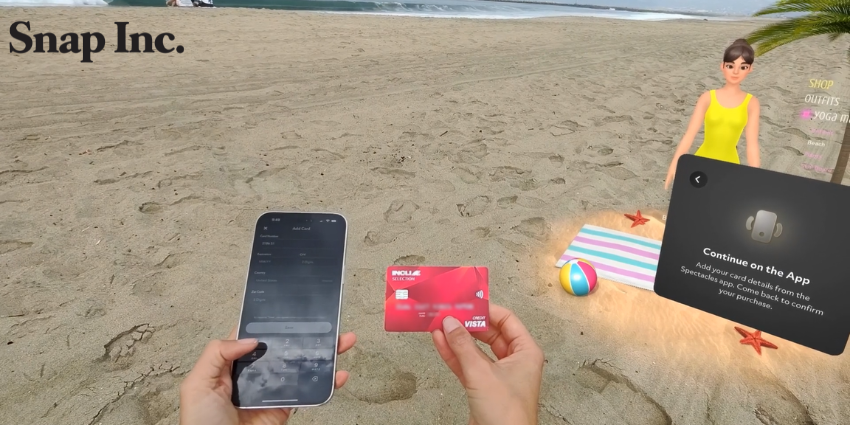This week at AWE Asia 2024, deep-tech firm XPANCEO showcased its latest step in developing AR smart contact lenses following a groundbreaking showcase earlier in the year.
During the AWE Asia conference, XPANCEO showcased five advanced AR smart contact lens hardware prototypes. The firm also teased that it is forecasting to debut a fully functional prototype by the end of 2026.
XPANCEO showcased various forms of its AR contact lenses to suit different use cases and end users; attendees of the AWE event could see the devices in person.
XPANCEO designed one prototype to aid individuals with colour blindness by enhancing colour perception using its display technology. The prototype achieves this by leveraging display technology “thinner than a human hair” to adjust lighting and improve contrast.
Another prototype includes optical verification tools for digital tasks such as making payments, transferring funds, and accessing restricted working environments. The prototype also highlights how XPANCEO focuses on providing a secure device in an age when outward-facing cameras on smart glasses raise safety and privacy concerns.
The impressive lineup builds up hype and an optimistic future for the future of XR devices on the whole. XPANCEO work shows that in time, XR headset vendors can decrease the size and weight of devices, therefore significantly improving the form factor and accessibility core factor behind ubiquity and adoption.
Is 2026 the Year of AR Contact Lenses?
At the Mobile World Congress (MWC) 2024, emerging XR display innovators XPANCEO showcased four smart contact lens prototypes, including one with deep XR features. Of its MWC prototypes, the firm stated that it aimed to build ultra-thin, unintrusive XR contact lenses to replace bulkier AR/VR/VR devices.
Based on research from roughly 40 scientists and engineers from leading Spanish and European universities and research institutions, XPANCEO is prototyping four separate smart contact lenses with various functions.
The XR-focused lens allows users to access features such as XR, health monitoring, and content surfing. The firm notes how future operators can access immersive visuals previously only achievable by large-scale XR head-mounted displays.
Moreover, users can interact with immersive video calls, social media, and gaming applications via its XR lens. Additionally, integrated biosensors allow the lens to display medical information as a heads-up display.
Each lens the firm is developing is as thin as a medical lens, with the firm forecasting it will design a “perfect all-in-one smart contact lens” in 2026
The market is opening for companies like XPANCEO because previous industry leader Mojo Vision cancelled its XR contact lens project in early 2023. Due to a lack of capital, Mojo Vision discontinued its research and operations despite a highly publicized campaign in which its CEO, Drew Parkins, demonstrated the use of the device himself.
Although Mojo Vision has abandoned this project and reduced its staff, focusing only on MicroOLED display technology, XPANCEO aims to seize the opportunity in the emerging XR contact lens market. The company is expected to launch its devices and announce a release timeline at the perfect moment, ready to fill the void left in the market.
Moreover, according to recent reports, the audience’s interest in XR devices is moving towards less invasive AR hardware. According to a report by ResearchAndMarkets, the global smart glasses market reached approximately 678,600 units in 2023.
The report anticipates significant market growth to 13 million units by 2030, with a Compound Annual Growth Rate (CAGR) of 53.0% from 2023 to 2030. The smart glasses market in the US expanded to about 432,300 units in 2023, with further growth expected. ResearchAndMarkets expects market growth in China, projecting 613,300 unit shipments by 2030 with a 62.5% CAGR.
Additionally, the report examines other hardware considerations such as “simple assisted reality glasses,” projected to reach 5 million units by 2030 with a CAGR of 50.3%, and MR holographic displays like Apple’s Vision Pro, expected to grow at a 58.4% CAGR until 2030.







